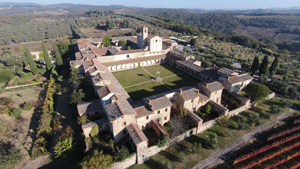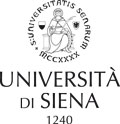Welcome
Background

The European Pain School (EPS), founded at the University of Siena (Italy) in 2002, is the first and still the premier school intended for students working on basic science and clinical topics related to acute and chronic pain. EPS has an interdisciplinary perspective and a distinct research orientation. Young scientists at the Ph.D. or postdoctoral levels (or equivalent) in all fields of pain science and pain medicine are encouraged to apply.
Mission and Overview
In the past the basic mechanisms of pain and the neural pathways involved were explored through research on animals and human subjects using well defined noxious stimuli and observing neurophysiological, behavioral and subjective sensory responses. This straightforward approach, however, is not sufficient to understand most of the real-life spontaneous and prolonged pain states that occur in human patients and animals. Rather, chronic pain involves complex and nonlinear functioning of neural and extraneural systems resulting in the maintenance of the pain process.
Long known are inflammatory mechanisms that can induce a prolonged pain state mediated by pain-producing substances of multiple origin including the immune system, with cytokines stimulating peripheral nociceptors or neurons of the central somatosensory system. Prolonged and enhanced activation of the central pain system may also be due to failure of inhibitory controls in the CNS, a likely mechanism in neuropathic pain. Control by both GABA and endogenous opioids may be affected, causing persistent pain and allodynia. Altered control may also be mediated by cytokines released from activated astrocytes and microglia in the CNS.
The mammalian pain system shows a clear sexual dimorphism that may depend on hormonal influences during peri- and postnatal nervous system development, among other causes. This sexual dichotomy has consequences for pain expression and for psychosocial and medical consequences of pain in males and females, including e.g. the process of pain chronification. Recognition of this dichotomy is resulting in developments in pain medicine that take gender into account.
The European Pain School believes in the advancement of interdisciplinary programs for the ultimate benefit of pain patients, disseminating this vision especially among junior investigators interested in basic and clinical research on pain.
2019 Edition: Headaches and Facial Pain
Migraine affects 15% of the general population and according to WHO migraine is the third cause of disability in under 50s worldwide. Migraine pain has distinctive features in terms of quality, presentation and others. However, and more importantly, migraine pain is unique as it is the sole type of pain that is efficiently ameliorated by triptans. Despite an enormous effort, the underlying mechanisms of migraine and related headaches (cluster headache and other headaches) remain poorly understood. About 35 years of molecular and clinical research regarding the role of calcitonin gene-related peptide (CGRP) in migraine have resulted in a novel effective approach to the acute treatment and prophylaxis of migraine. The CGRP system has also unique features as CGRP expression has been predicted by analysis of the alternative splicing of the calcitonin gene in the nervous system, and the CGRP receptor requires a RAMP protein for its functioning. The concept of neurogenic inflammation, first proposed in medical research by William Bayliss (1901) and Sir Tomas Lewis (1936), has been developed with the use of the TRPV1 agonist capsaicin and with the study of CGRP-evoked responses in mammals and in man; it has greatly contributed to the current knowledge of migraine pain.
The 2019 edition of the EPS will address the results that, from basic science to clinical investigation, have paved the way for the recent understanding of migraine pain and its treatment. Moreover, as always, pain in general will be discussed under the different aspects related to the main experimental and clinical conditions.
Topics
- Research and Clinical Phenotyping of headache and facial pain patients
- Genomic and proteomic assessments
- How to reduce "big data" into clinical tools for diagnosis
- Clinical features and epidemiology of primary headaches
- Physiology and pathophysiology of neurogenic inflammation
- The role of CGRP in migraine and cluster headache
- Chronic headaches and their treatment
- Sex and gender differences in pain
- Ethics of pain research and therapy
Faculty 2019
Anna Maria Aloisi, Siena, Italy
Carlo V. Bellieni, Siena, Italy
Michael Boettger, Wuppertal, Germany
Giancarlo Carli, Siena, Italy
Antonella Ciaramella, Pisa, Italy
Marshall Devor, Jerusalem, Israel
Pierangelo Geppetti, Florence, Italy
Philip Holland, London, United Kingdom
Marzia Malcangio, London, United Kingdom
Karl Messlinger, Erlangen, Germany
Lenaic Monconduit, Clermont-Ferrand, France
Daniela Pietrobon, Padua, Italy
Janosch A. Priebe, Munich, Germany
Peter Reeh, Erlangen, Germany
Cristina Tassorelli, Pavia, Italy
Past cycles of the School
EPS 2018 • Pain: from Fetus to Old Age (10-17 June 2018)
EPS 2017 • CNS vs PNS Contributions to Persistent Pain (4-11 June 2017)
EPS 2016 • Pain: Neurons, Gender and Society (5-12 June 2016)
EPS 2015 • Plasticity in neural processing as a mechanism in chronic pain (7-14 June 2015)
EPS 2014 • Spontaneous versus Evoked Pain in Animals and Humans (8-15 June 2014)
EPS 2013 • Brain Modulation of Pain Experience (9-16 June 2013)
EPS 2012 • Evolution of Concepts on Pain (3-10 June 2012)
EPS 2011 • Pain: Bridging Molecules and Mind (12-19 June 2011)
EPS 2010 • Translating Pain Science into Pain Medicine (30 May - 6 June 2010)
EPS 2009 • Molecular Mechanisms of Pain Response (13-20 June 2009)
EPS 2008 • Hyperexcitable Neurons as Pain Generators (15-22 June 2008)
EPS 2007 • Pain Syndromes: Science and Medical Practice (17-24 June 2007)
EPS 2006 • Pain and the Central Nervous System (12-17 June 2005)
EPS 2005 • Chronic Pain a Disease: The Role of Genes (6-11 June 2005)
EPS 2003 • Chronic Pain a Disease: Novel Scientific Concepts (25-31 October 2003)


 European
European









